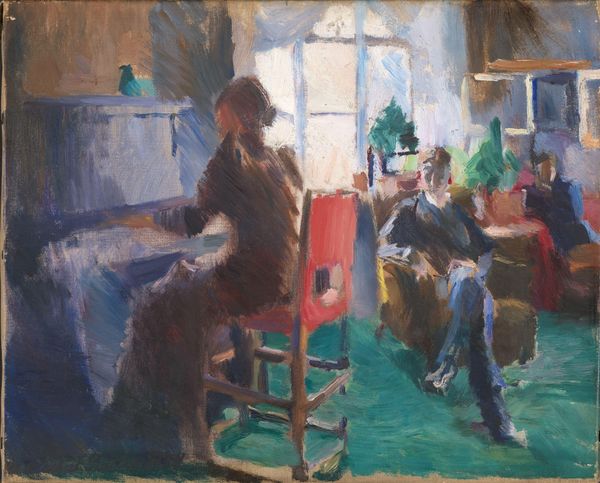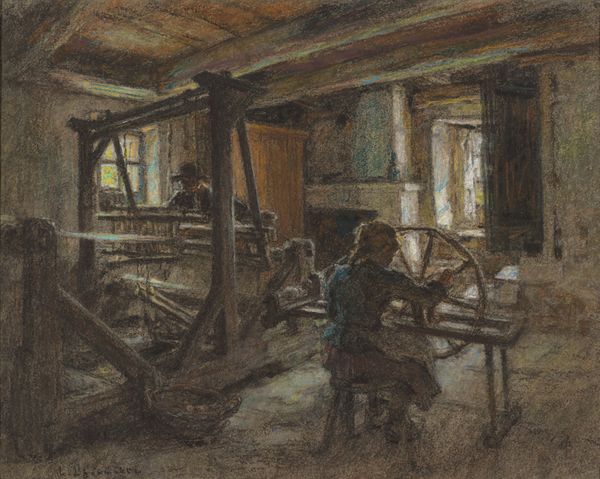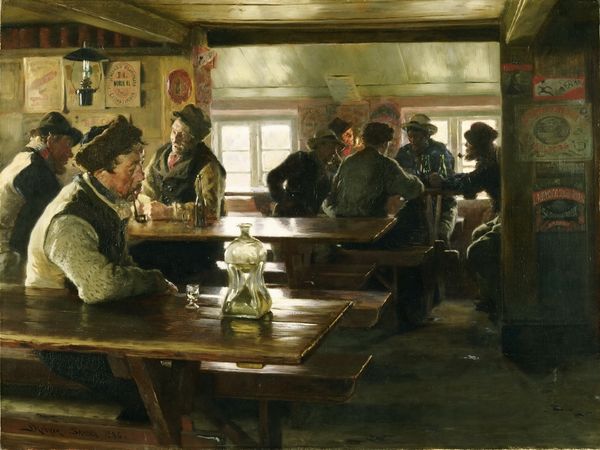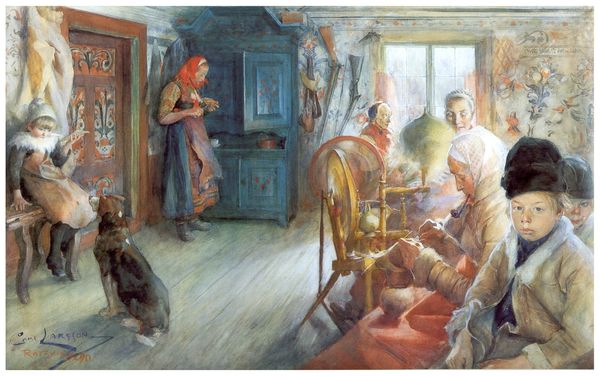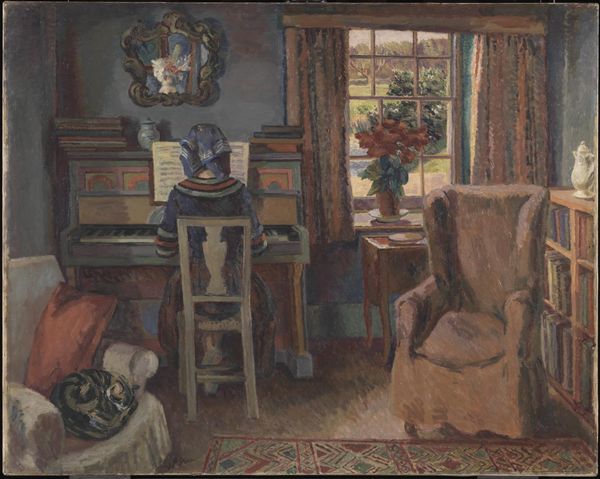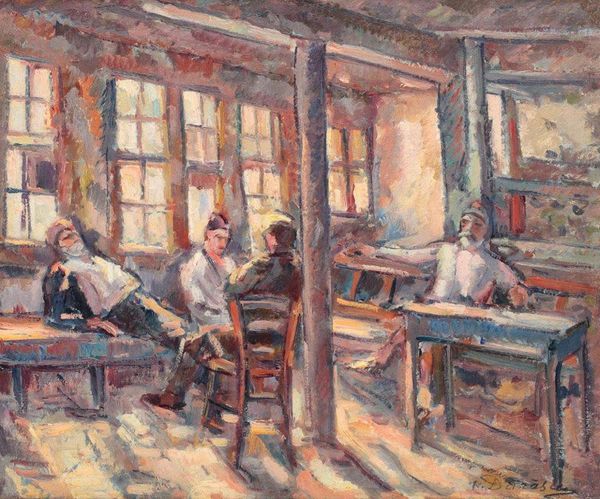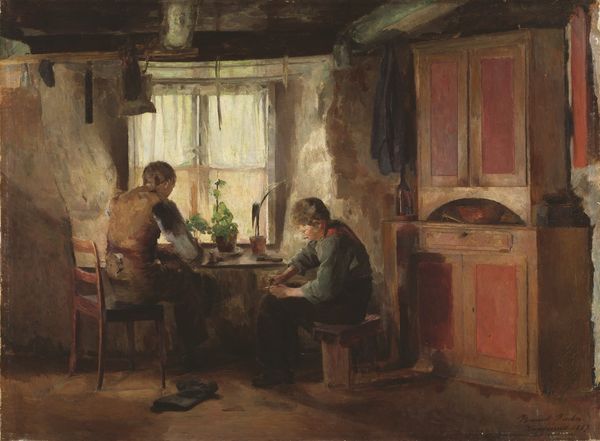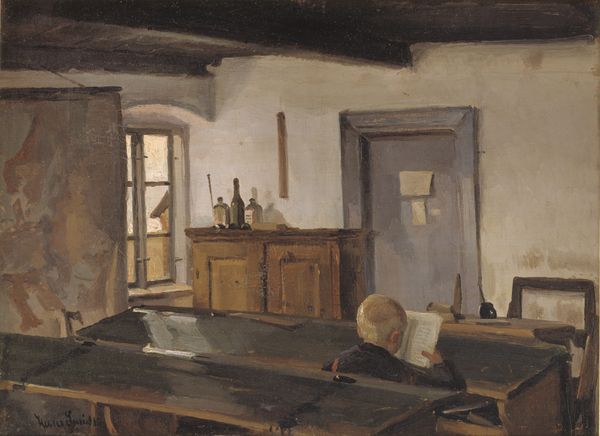
Copyright: Public domain
Editor: This is Harriet Backer's "The Living Room at Kolbotn (Hulda and Arne Garborg's Home)," an oil painting from 1896. The interior feels warm, domestic, even a bit hushed. There’s a figure playing the violin while another listens, and the red of the wood paneling creates such an enveloping atmosphere. What do you see in this piece, beyond just a snapshot of a room? Curator: Immediately, I am drawn to the way Backer uses the domestic space itself as a symbol. Consider the prominence of the traditional Norwegian elements – the painted wood, the folk art details. These choices are deeply connected to the burgeoning national romantic movement in Norway at the time. Editor: National romantic? So, the setting itself is part of the message? Curator: Precisely. It’s not just a living room, it's a stage for exploring Norwegian identity. Look at the faces of the figures; there's an intensity, an absorption in the music, reflecting the power of art and culture in defining who they are, who Norway is. It reminds me of other works dealing with ideas of national identity and belonging at that time. Are you getting the sense that Backer is presenting a narrative about cultural continuity and the significance of preserving traditions? Editor: Definitely. The man playing the violin, the woman listening—they embody that continuity. But how does the visual symbolism of the interior itself support that idea? Curator: Think of the red color—often tied to folklore and tradition in Norwegian art. Or the subtle religious iconography. Those seemingly simple, everyday objects speak volumes about cultural memory and the ongoing conversation between the past and the present. Editor: So, by showcasing this domestic scene, Backer invites the viewer to consider Norway’s cultural heritage at a moment of profound cultural definition? Curator: Precisely. Backer wasn't just painting a room; she was capturing a pivotal moment in Norwegian cultural self-discovery. Editor: That makes the artwork feel far richer, to consider how images themselves become a kind of living archive.
Comments
No comments
Be the first to comment and join the conversation on the ultimate creative platform.

